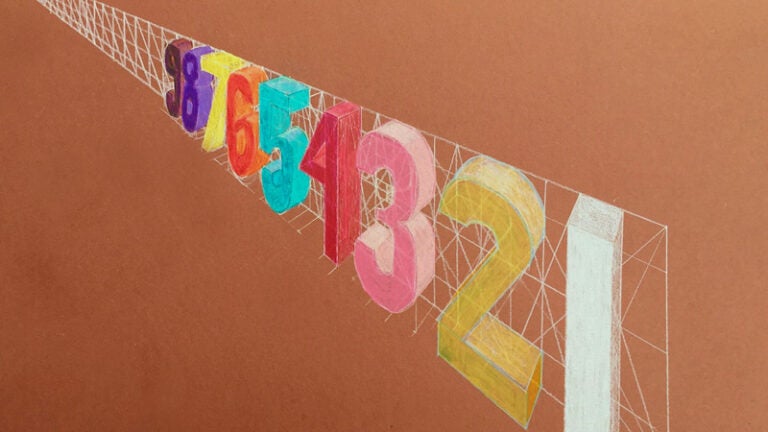
Painting By Numbers
What color is Tuesday? What does purple smell like? Does the word “star” have a taste? These seem like absurd questions to most of us but for about 3% of the population, they make perfect sense.
That’s because about one in 2,000 people have synesthesia, a neurological condition in which sensory input creates unlikely reactions. Hearing music generates smells, seeing shapes may induce a taste. Or, as in the case of Felicia Tabing, a USC Dornsife lecturer in mathematics, numbers appear as a particular color. Neuroscientists still don’t know the exact cause of synesthesia.
Tabing only put a name to her unusual abilities a few years ago. “My husband was listening to a program on NPR about synesthesia and he asked me, ‘What color is three?’ and I said, ‘It’s pink,’” recalls Tabing. Before this exchange, she had assumed everyone saw numbers in distinct colors.
“What color is three?”
Tabing’s numerical rainbow inspires her artistically. She paints “geometric series,” sequences of mathematical fractions that can be visualized using boxes. She then colors the squares in shades evoked by the fractions. “For example, in the decimal for Pi, 3.14, three is pinkish, one is white and four is red. The number Pi is purplish,” she explains.
An artistic mathematician may seem unusual, but creativity and math are actually closely linked, Tabing says. Think of architecture, for instance. Perspective drawing, which deploys carefully measured grids to get angles correct, is another example. These sequences of boxes bear a considerable resemblance to Tabing’s geometric series.
Others may place a street scene over the top of their perspective grid. Tabing, however, will dab blue, lavender or yellow colors inside the boxes, depending on what the numbers tell her.